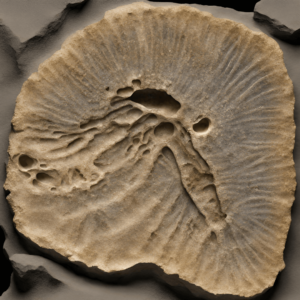
Major Discovery: Unearthing a 1.75 Billion-Year-Old Fossil Sheds Light on the Origins of Life on Earth
Introduction
Life on Earth has always been a subject of fascination, leading scientists on an unceasing quest to unravel its mysteries. Recently, a major breakthrough in the field of paleontology has taken place, as a 1.75 billion-year-old fossil has been unearthed, providing invaluable insights into the origins of life. This groundbreaking discovery has the potential to reshape our understanding of how life originated on our planet. In this article, we will explore this remarkable find and the implications it holds for our understanding of the origins of life on Earth.
The Significance of the Discovery
The unearthing of a fossil that dates back 1.75 billion years is a momentous event in the scientific community. Fossils from this era are scarce, making each new find a cause for celebration. This particular fossil, discovered in a remote region, holds extraordinary significance due to its exceptional preservation and the age it represents. Let us delve into the significance of this major discovery:
1. Unraveling Life’s Early Chapters
By examining the remarkably preserved features of this 1.75-billion-year-old fossil, scientists have been able to gain insights into the early stages of life on Earth. This fossil provides a glimpse into a time when complex life forms were just beginning to emerge, shedding light on the evolutionary processes that led to the diversity of life we see today.
2. Confirming Long-Held Theories
The discovery of this fossil supports the long-held scientific hypothesis that life on Earth originated in marine environments. Its unique characteristics and the geological context in which it was found align with theories that suggest early life forms thrived in ancient oceans. This reinforces our understanding of the conditions required for the emergence and evolution of life.
3. Establishing a Timeline
Establishing an accurate timeline for the emergence of life on Earth has been a challenge for scientists. Through the dating of this fossil, researchers can now pinpoint with greater precision the chronology of life’s early stages. This information provides invaluable context for studying the evolutionary history of our planet and the organisms that inhabit it.
The Unearthed Fossil: Pioneering Insights
The fossil that has captivated the scientific community is an astonishing find, revealing intricate details of a life form that existed 1.75 billion years ago. Here are some of the pioneering insights obtained from its analysis:
1. Cellular Complexity
Upon close examination, scientists have discovered that this fossil exhibits a high level of cellular complexity, indicating that life forms were already quite advanced even at this early stage. The intricate cellular structures hint at the existence of complex metabolic processes essential for sustaining life.
2. Preserved Environmental Clues
The unique preservation of this ancient fossil provides scientists with an opportunity to study the environmental conditions in which it thrived. The presence of specific minerals and sedimentary layers surrounding the fossil offers valuable clues about the composition of ancient oceans and the possible sources of nutrients that sustained early life forms.
3. Evolutionary Connections
By scrutinizing the morphological features of the fossil, scientists have identified striking similarities to existing organisms, particularly in the realm of microbial life. These similarities suggest an evolutionary link between ancient life forms and present-day organisms, further supporting the theory of common ancestry across the tree of life.
The Implications for Origin of Life Theories
The discovery of this 1.75 billion-year-old fossil opens up a Pandora’s box of possibilities for our understanding of the origins of life on Earth. Here are some of the profound implications it has for origin of life theories:
1. Life Emerged Earlier Than Predicted
The age of this fossil suggests that life on Earth emerged much earlier than previously predicted. It challenges the notion that complex life forms only emerged around 600 million years ago, as earlier fossils tended to be less complex. This discovery pushes back the timeline and prompts scientists to reassess their models of the origin and evolution of life.
2. The Role of Ancient Oceans
The finding of this fossil in a marine environment supports the hypothesis that ancient oceans were crucial for the emergence and sustenance of life. The unique chemistry and abundance of essential nutrients in these oceans likely provided the ideal conditions for the evolution of complex life forms.
3. Filling Gaps in the Tree of Life
The discovery of this ancient fossil helps fill in gaps in our understanding of the evolutionary history of life on Earth. By providing evidence of complex cellular structures and revealing evolutionary connections to present-day organisms, it helps to bridge the missing links in the tree of life, allowing scientists to better comprehend the complex web of life’s origins.
Conclusion
The unearthing of a 1.75 billion-year-old fossil has left scientists in awe and excitement. This pivotal discovery provides invaluable insights into the origins of life on Earth and challenges existing theories with its astonishing complexity. By examining the unique features of this fossil, scientists can deepen our understanding of the early stages of life’s evolution, the conditions required for its emergence, and the connections between ancient life forms and present-day organisms. This remarkable find is a testament to the continuous exploration and dedication of scientists worldwide, unraveling the mysteries of our planet’s history one fossil at a time.
FAQs
Q1: How was this 1.75 billion-year-old fossil discovered?
A1: The fossil was discovered in a remote region by a team of paleontologists who were conducting an excavation in search of ancient marine life.
Q2: How does this fossil contribute to our understanding of the origins of life?
A2: By studying the intricacies of this well-preserved fossil, scientists can gain valuable insights into the early stages of life’s evolution and the conditions necessary for its emergence.
Q3: What are the future implications of this major discovery?
A3: The discovery of this fossil will undoubtedly impact future research on the origin of life on Earth. It will prompt scientists to reevaluate existing theories and continue to explore the connections between ancient life forms and the diversity of life we see today.
Fresh Faces: Will Michael Beale shake up the lineup for today’s New Year’s clash?

